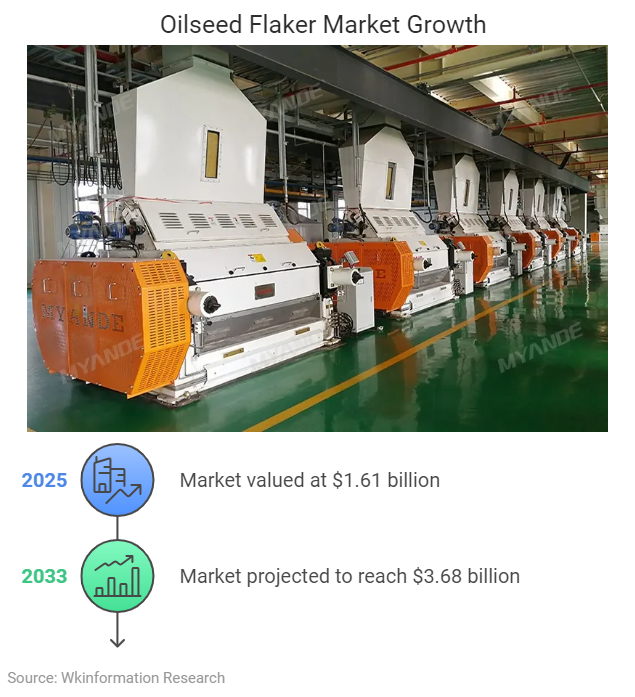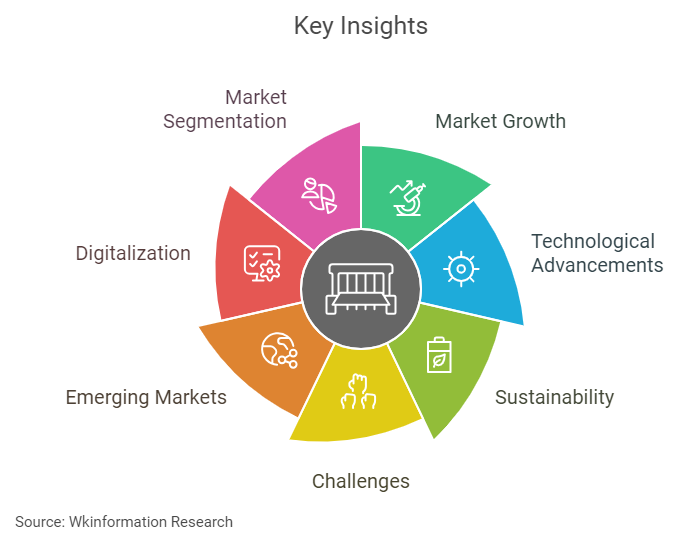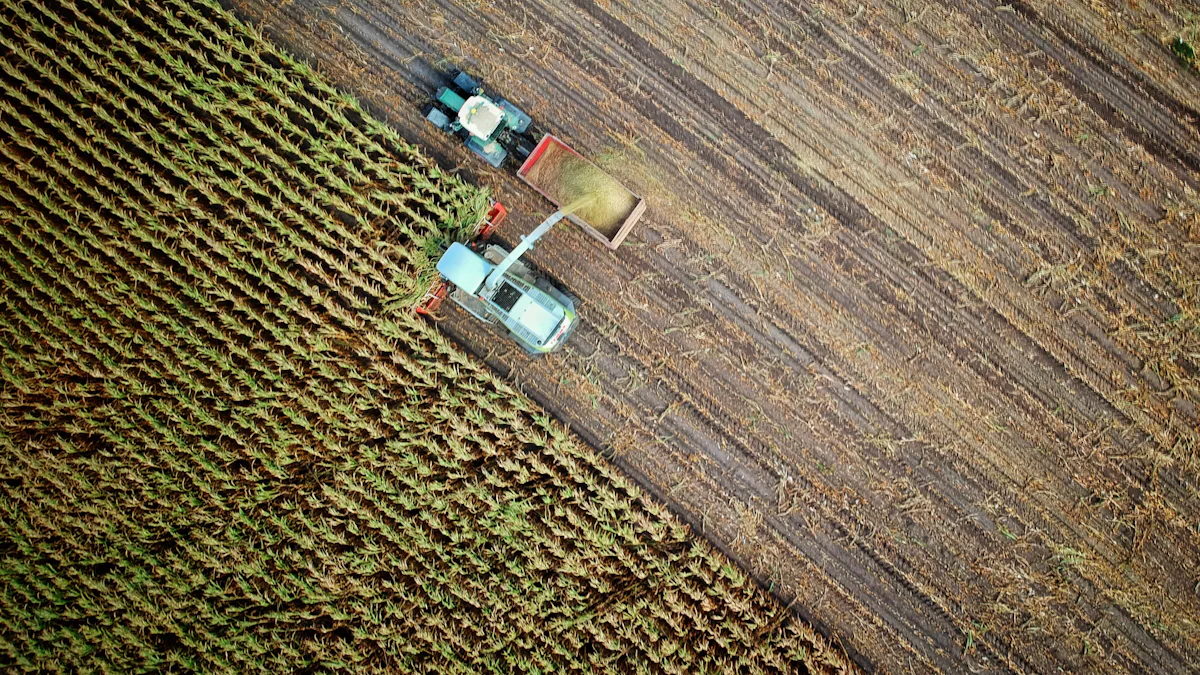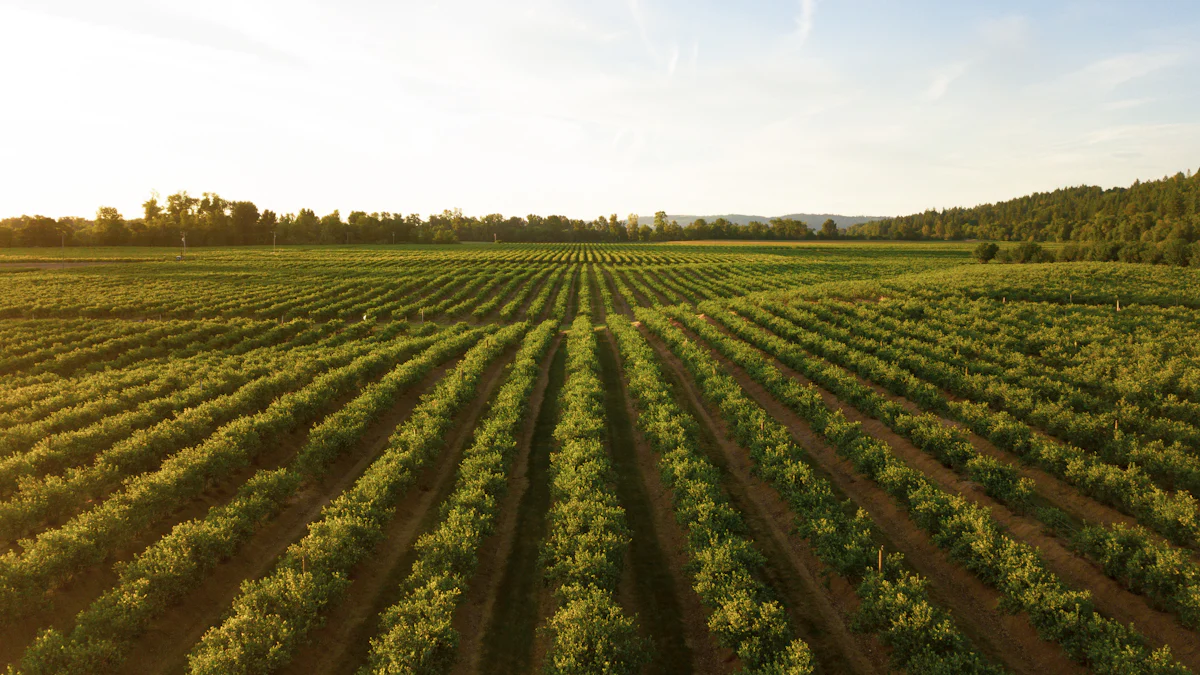
The oilseed flaker market serves as a cornerstone of the global oilseed processing industry, enabling efficient production of edible oils and biofuels. Valued at approximately $1.61 billion in 2025, this market is projected to achieve remarkable growth, reaching $3.68 billion by 2033 with a robust CAGR of 10.89%. This upward trajectory stems from increasing demand for vegetable oils and biofuels, alongside advancements in processing technologies. As industries prioritize sustainability and energy efficiency, the oilseed flaker market continues to evolve, addressing modern challenges while meeting global needs.
Key Insights
- The oilseed flaker market is projected to grow from $1.61 billion in 2025 to $3.68 billion by 2033, driven by rising demand for edible oils and biofuels.
- Technological advancements, such as high-capacity flakers and automation, are enhancing efficiency and productivity in oilseed processing.
- Sustainability is a key focus, with companies adopting energy-efficient machinery and eco-friendly practices to meet consumer and regulatory demands.
- Challenges like high initial investment costs and fluctuations in raw material prices can impact market stability, particularly for smaller enterprises.
- Emerging markets in Asia-Pacific and Latin America present significant growth opportunities due to increasing oilseed production and industrialization.
- Digitalization is transforming the industry, with IoT technologies enabling real-time monitoring and predictive maintenance to optimize operations.
- Understanding market segmentation by type, application, and geography helps stakeholders identify specific growth opportunities and tailor strategies effectively.

Market Growth and Influencing Factors

Current Market Value and Projected Growth
The oilseed flaker market has demonstrated remarkable progress in recent years. Valued at approximately $1.61 billion in 2025, it is projected to reach $3.68 billion by 2033, reflecting a robust compound annual growth rate (CAGR) of 10.89%. This impressive trajectory highlights the increasing importance of oilseed processing in global industries.
Regional dynamics play a pivotal role in shaping market growth. South America emerges as a significant growth hotspot, driven by advancements in crop plantation technologies, rising soybean production, and the growing popularity of oilseed-based products. Similarly, Europe experiences steady growth due to the adoption of vegetable oils for food and biofuel applications. These regions contribute significantly to the overall expansion of the oilseed flaker market.
Key Growth Drivers
Several factors fuel the growth of the oilseed flaker market:
- Increasing demand for edible oils and biofuels: The rising global population and changing dietary preferences have amplified the need for vegetable oils. Additionally, the shift toward renewable energy sources has boosted biofuel production, further driving the demand for oilseed processing equipment.
- Technological advancements in oilseed processing equipment: Innovations in machinery enhance efficiency and productivity. High-capacity flakers and automated systems streamline operations, meeting the growing demand for large-scale production.
- Rising focus on sustainability and energy efficiency: Industries prioritize eco-friendly practices to reduce environmental impact. Energy-efficient machinery and sustainable processing methods align with these goals, fostering growth opportunities in the market.
Challenges Impacting Growth
Despite its promising outlook, the oilseed flaker market faces several challenges:
- High initial investment costs for advanced machinery: Modern oilseed processing equipment requires substantial capital investment. This financial barrier limits adoption, particularly among small and medium-sized enterprises.
- Fluctuations in raw material prices and supply chain disruptions: The oilseed farming industry experiences significant volatility due to changing global and domestic supply conditions. Farmers often alternate between crops like corn and soybeans based on expected yields and prices, causing unpredictable shifts in oilseed availability. These fluctuations disrupt supply chains and impact market stability.
“The oilseed farming industry produces mainly canola, sunflower, and flaxseed, with revenue fluctuating significantly in line with changes in the agriculture sector,” according to industry analysis. Such variability underscores the challenges faced by the oilseed flaker market.
By addressing these challenges and leveraging emerging opportunities, stakeholders can navigate the evolving dynamics of the oilseed flaker market effectively.
Emerging Trends in the Oilseed Flaker Market

Focus on Efficiency and Productivity
The oilseed flaker market is witnessing significant advancements aimed at enhancing operational efficiency and productivity. Manufacturers are prioritizing the development of high-capacity flakers designed for large-scale operations. These machines cater to the increasing demand for bulk processing, ensuring faster throughput and reduced downtime. By addressing the needs of industrial-scale production, these innovations contribute to the overall growth of the market.
Automation and the integration of IoT (Internet of Things) technologies are transforming flaking processes. Automated systems streamline operations by reducing manual intervention, improving precision, and minimizing errors. IoT-enabled flakers provide real-time data on performance metrics, enabling operators to monitor and adjust parameters for optimal results. This technological shift not only boosts productivity but also aligns with the growing trends of digitalization in the industry.
Sustainability and Environmental Concerns
Sustainability has become a central focus in the oilseed flaker market. Companies are adopting energy-efficient machinery to reduce power consumption and operational costs. These machines utilize advanced designs and materials that enhance performance while minimizing environmental impact. The emphasis on energy efficiency reflects the industry’s commitment to sustainable practices, which are increasingly demanded by consumers and regulatory bodies.
The use of recyclable materials in equipment manufacturing further underscores the market’s dedication to environmental protection. By incorporating eco-friendly components, manufacturers reduce waste and promote a circular economy. This approach not only addresses environmental concerns but also creates new opportunities for businesses to differentiate themselves in a competitive market.
Digitalization and Smart Technologies
Digitalization is reshaping the dynamics of the oilseed flaker market. Real-time monitoring systems allow operators to track machine performance and identify potential issues before they escalate. Predictive maintenance systems, powered by artificial intelligence, analyze data to forecast maintenance needs, reducing downtime and extending equipment lifespan. For instance, Spro Automation recently unveiled an AI-powered oilseed flaker monitoring system that optimizes flaking parameters and predicts maintenance requirements. Such innovations highlight the transformative potential of smart technologies in the industry.
Data-driven optimization is another emerging trend. Advanced analytics tools process vast amounts of operational data to identify inefficiencies and recommend improvements. This approach enhances the precision and consistency of flaking processes, ensuring higher-quality outputs. As digitalization continues to evolve, it opens up new opportunities for market players to enhance their competitiveness and drive growth.
Market Segmentation
Market segmentation provides a detailed understanding of the oilseed flaker market by categorizing it into distinct segments based on type, application, and geography. This approach helps stakeholders identify specific growth opportunities and tailor strategies to meet diverse market demands.
By Type
Vertical Flakers
Vertical flakers dominate the market due to their compact design and efficient performance. These machines are widely used in facilities with limited space, offering high productivity without compromising quality. Their vertical configuration ensures uniform flaking, making them a preferred choice for small to medium-scale operations.
Horizontal Flakers
Horizontal flakers cater to large-scale industrial applications, where high-capacity processing is essential. Their robust design and ability to handle significant volumes make them ideal for continuous operations. These machines are often equipped with advanced features, such as automated controls, to enhance efficiency and reduce downtime.
By Application
Edible Oil Production
The edible oil production segment represents a significant share of the oilseed flaker market. The rising global demand for vegetable oils, driven by population growth and changing dietary preferences, has fueled the adoption of flaking equipment. Efficient flaking processes ensure optimal oil extraction, meeting the needs of both domestic and industrial consumers.
Biofuel Processing
Biofuel processing has emerged as a key application area, reflecting the growing shift toward renewable energy sources. Oilseed flakers play a crucial role in preparing raw materials for biofuel production, ensuring high-quality outputs. This segment continues to expand as industries prioritize sustainable energy solutions.
Industrial Applications
Industrial applications encompass a wide range of uses, including the production of animal feed and specialty oils. The versatility of oilseed flakers allows them to cater to diverse industrial needs, contributing to the overall growth of the market. Manufacturers in this segment focus on developing customized solutions to address specific requirements.
By Geography
North America
North America remains a prominent market for oilseed flakers, driven by advancements in agricultural practices and the increasing adoption of biofuels. The region’s well-established infrastructure and focus on technological innovation support market growth.
Europe
Europe experiences steady growth due to the rising demand for vegetable oils in food and biofuel applications. The region’s emphasis on sustainability and energy efficiency further drives the adoption of advanced flaking equipment.
Asia-Pacific
Asia-Pacific emerges as a dynamic growth hotspot, fueled by rapid industrialization and increasing oilseed production. Countries like China and India lead the market, supported by government initiatives promoting agricultural development and renewable energy.
Latin America
Latin America shows significant potential, with Brazil and Argentina contributing heavily to the market. The region’s abundant soybean production and focus on export-oriented industries create lucrative opportunities for oilseed flaker manufacturers.
Middle East & Africa
The Middle East & Africa region witnesses gradual growth, driven by the rising adoption of oilseed-based products and investments in agricultural infrastructure. The region’s untapped potential offers opportunities for market expansion.
Understanding these segments allows businesses to navigate market dynamics effectively and capitalize on emerging trends and opportunities.
Key Players and Competitive Landscape
Leading Companies in the Market
The oilseed flaker market features several prominent players that drive innovation and competition. These companies leverage their expertise and resources to maintain a strong foothold in the industry.
Overview of Major Players
- CPM Roskamp: Known for its advanced flaking equipment, CPM Roskamp has established itself as a leader in the market. The company focuses on delivering high-performance machinery tailored to meet the needs of large-scale operations.
- Bühler Group: This Swiss-based company excels in providing cutting-edge solutions for oilseed processing. Its global presence and commitment to technological advancements in oilseed flaker equipment have solidified its reputation as a key player.
- French Oil Mill Machinery Co.: With a rich history in manufacturing oilseed processing equipment, this company emphasizes quality and innovation. Its products cater to diverse applications, ensuring efficiency and reliability.
Other notable players include Archer Daniels Midland, Cargill, Wilmar International, and Bunge Limited. These companies have expanded their geographical presence through strategic investments and partnerships. For instance, Archer Daniels Midland and Cargill maintain strong distribution networks across North America and Europe, ensuring accessibility to their products. Wilmar International leads the market by investing in GMO hybrid seeds and collaborating with regional players to enhance its offerings.
Market Share and Geographical Presence
Market leaders like Bühler Group and CPM Roskamp dominate due to their extensive product portfolios and global reach. These companies have a significant presence in regions such as North America, Europe, and Asia-Pacific. Their ability to adapt to regional demands and provide customized solutions contributes to their sustained market growth. Emerging players are also gaining traction by focusing on untapped markets in Latin America and the Middle East & Africa.
Recent Developments and Innovations
The oilseed flaker market has witnessed remarkable developments that reflect the industry’s dynamic nature. Companies are introducing new products and forming strategic alliances to stay competitive.
Launch of New Products and Technologies
Manufacturers are prioritizing innovation to address evolving customer needs. For example, Cargill recently introduced its transgenic Enlist E3 technology in soybeans, enhancing oilseed quality and yield. Similarly, Bühler Group unveiled a new line of energy-efficient flakers designed to optimize performance while reducing operational costs. These advancements highlight the industry’s commitment to technological progress.
Strategic Partnerships, Mergers, and Acquisitions
Collaborations and acquisitions play a crucial role in shaping market dynamics. Wilmar International has signed partnership agreements with regional players to strengthen its position in the market. Archer Daniels Midland and Bunge Limited have also engaged in joint ventures to expand their production capacities and explore new opportunities. These strategic moves enable companies to enhance their competitiveness and cater to a broader customer base.
Competitive Strategies
To thrive in a competitive landscape, companies adopt various strategies that align with market trends and customer demands.
Focus on R&D and Innovation
Research and development remain a top priority for leading players. Companies invest heavily in creating advanced machinery that incorporates automation and IoT technologies. This focus on innovation not only improves efficiency but also addresses sustainability concerns. For instance, CPM Roskamp has developed high-capacity flakers equipped with real-time monitoring systems, setting a benchmark for technological advancements in oilseed flaker equipment.
Expansion into Emerging Markets
Emerging markets offer significant growth opportunities for industry players. Regions like Asia-Pacific and Latin America present untapped potential due to increasing oilseed production and industrialization. Companies such as Bühler Group and Wilmar International are actively expanding their operations in these regions to capitalize on the growing demand for oilseed processing equipment.
Overview
The oilseed flaker market is set to experience substantial growth, driven by rising demand for edible oils, biofuels, and advancements in processing technologies. Sustainability and innovation remain pivotal in addressing challenges and unlocking new opportunities. Companies are focusing on energy-efficient machinery and sustainable practices, such as waste heat recovery, to align with environmental goals. Exploring untapped markets and adopting cutting-edge technologies will enable stakeholders to stay competitive in this evolving landscape. By prioritizing efficiency and sustainability, the market continues to adapt to dynamic global demands and emerging trends.
| Report Attributes | Details |
|---|---|
| Base Year | 2024 |
| Market Size 2025 | 1.61 Billion USD |
| Market Size 2033 | 3.68 Billion USD |
| CAGR | 10.89% |
| Historical Year | 2019 – 2024 |
| Forecast Year | 2025 – 2033 |
| Report Coverage | Revenue Forecast, Market Competitive Landscape, Growth Factors, and Trends |
| Segments Covered | Type, Applications, and Region |
| Geographies Covered | North America, Europe, Asia Pacific, and the Rest of the World |
FAQ
What are the types of oilseed flaking machines?
Oilseed flaking machines are essential in the oilseed processing industry. They prepare seeds like soybeans, sunflower seeds, and canola seeds for oil extraction. The process involves applying pressure and heat to rupture cell walls, creating thin flakes with a larger surface area. This enhances the efficiency of oil extraction. The two primary types of flaking machines include:
- Vertical Flakers: Compact and efficient, these machines are ideal for facilities with limited space. They ensure uniform flaking, making them suitable for small to medium-scale operations.
- Horizontal Flakers: Designed for large-scale industrial applications, these machines handle significant volumes. Their robust design and advanced features, such as automated controls, enhance productivity.
How does oilseed flaking improve oil extraction?
Flaking increases the surface area of oilseeds, allowing for better penetration during the extraction process. By breaking the seeds into thin flakes, the machine ensures that oil is released more efficiently. This step is crucial for achieving higher yields and maintaining the quality of the extracted oil.
What are the recent developments in the oilseed flaker industry?
The oilseed flaker industry has seen significant advancements. Manufacturers are focusing on energy-efficient machinery and integrating automation and IoT technologies. For instance, real-time monitoring systems and predictive maintenance tools have become standard features. These innovations improve operational efficiency and reduce downtime. Additionally, companies are adopting sustainable practices, such as using recyclable materials in equipment manufacturing.
What challenges does the oilseed flaker market face?
The oilseed flaker market encounters several challenges, including:
- High initial investment costs: Advanced machinery requires substantial capital, which can deter small and medium-sized enterprises.
- Fluctuations in raw material prices: Variability in oilseed availability impacts supply chains and market stability.
- Supply chain disruptions: Global and domestic factors often lead to unpredictable shifts in the availability of oilseeds.
What are the growth opportunities in the oilseed flaker market?
The market offers numerous opportunities for growth. Emerging regions like Asia-Pacific and Latin America present untapped potential due to increasing oilseed production and industrialization. Additionally, the rising demand for biofuels and edible oils drives the need for advanced flaking equipment. Companies investing in sustainable and energy-efficient technologies can capitalize on these opportunities.
How do sustainability trends impact the oilseed flaker industry?
Sustainability has become a key focus in the industry. Manufacturers are developing energy-efficient machinery to reduce power consumption and operational costs. The use of recyclable materials in equipment manufacturing aligns with environmental goals. These efforts not only address regulatory requirements but also meet consumer demand for eco-friendly practices.
What role does digitalization play in the oilseed flaker market?
Digitalization is transforming the market dynamics. IoT-enabled flakers provide real-time data on performance metrics, allowing operators to optimize processes. Predictive maintenance systems analyze data to forecast equipment needs, reducing downtime. Data-driven optimization enhances precision and consistency, ensuring higher-quality outputs.
Which regions are driving the growth of the oilseed flaker market?
Several regions contribute significantly to market growth:
- Asia-Pacific: Rapid industrialization and government initiatives in countries like China and India drive demand.
- Latin America: Abundant soybean production in Brazil and Argentina creates lucrative opportunities.
- Europe: The adoption of vegetable oils for food and biofuel applications supports steady growth.
- North America: Advancements in agricultural practices and biofuel adoption fuel the market.
Who are the leading players in the oilseed flaker industry?
Prominent companies in the industry include:
- CPM Roskamp: Known for high-performance machinery tailored for large-scale operations.
- Bühler Group: A leader in cutting-edge oilseed processing solutions with a global presence.
- French Oil Mill Machinery Co.: Renowned for quality and innovation in oilseed processing equipment.
Other notable players include Archer Daniels Midland, Cargill, Wilmar International, and Bunge Limited. These companies maintain strong market positions through strategic investments and partnerships.
Why is oilseed flaking important for biofuel production?
Oilseed flaking plays a critical role in biofuel production. It prepares raw materials by breaking seeds into thin flakes, ensuring efficient oil extraction. This step is essential for producing high-quality biofuels, which are increasingly in demand as industries shift toward renewable energy sources.
Global Oilseed Flaker Market Report – Table of Contents
1 Market Study Overview
2 Basic Product Information
3 Market Analysis
4 Oilseed Flaker Related Market Analysis
5 Global Trend Summary
6 Competition by Manufacturer
7 Analysis of Key Players
8 Global Oilseed Flaker Revenue, Sales Categorized by Regions
9 North America Oilseed Flaker Market Size Categorized by Countries
10 Europe Oilseed Flaker Market Size Categorized by Countries
11 Asia-pacific Oilseed Flaker Market Size Categorized by Countries
12 South America Oilseed Flaker Market Size Categorized by Countries
13 Middle East and Africa Oilseed Flaker Market Size Categorized by Countries
14 Global Oilseed Flaker Industry Segment Analysis
15 Global Oilseed Flaker Market Forecast
16 Research Findings and Conclusion
17 Appendix


